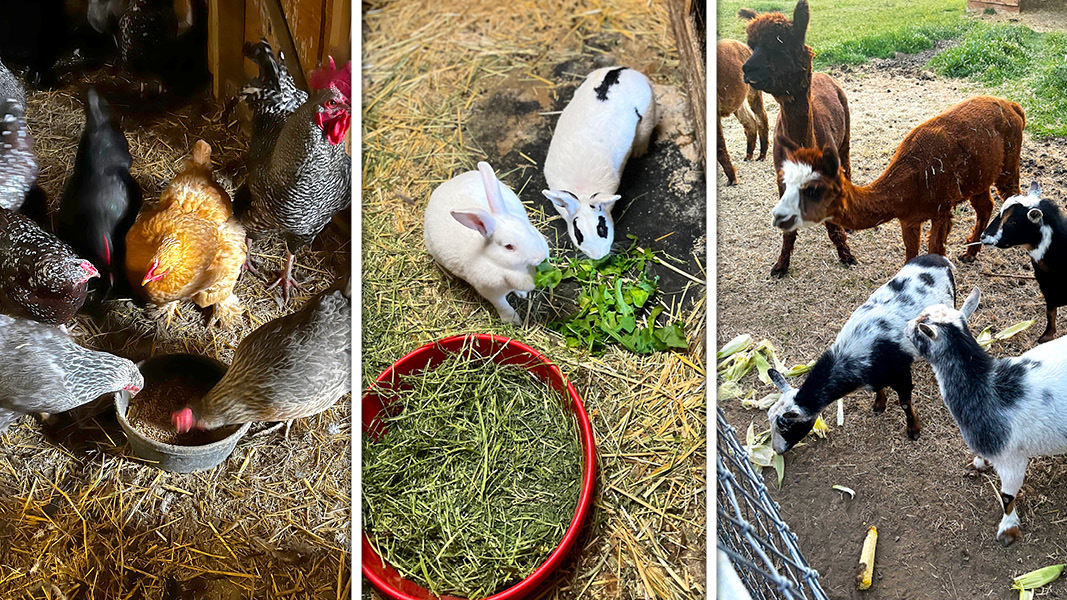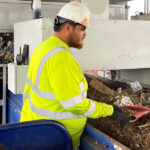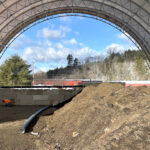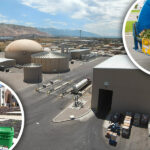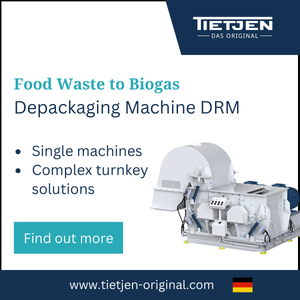Top: Chickens, rabbits, goats and alpacas enjoying food scraps. Photos by Sally Brown
 Sally Brown
Sally Brown
In our house we take food very seriously. It is a source of great joy and guilt. In season or when I am hungry, so much looks so nice that I tend to overbuy. We also grow food. For fun we often turn to foraging and fishing. This leads to problems of luxury like a surfeit of halibut and chanterelle mushrooms. It also leads to issues of excess. There are two of us. So how to reconcile this with the U.S. EPA Wasted Food Scale?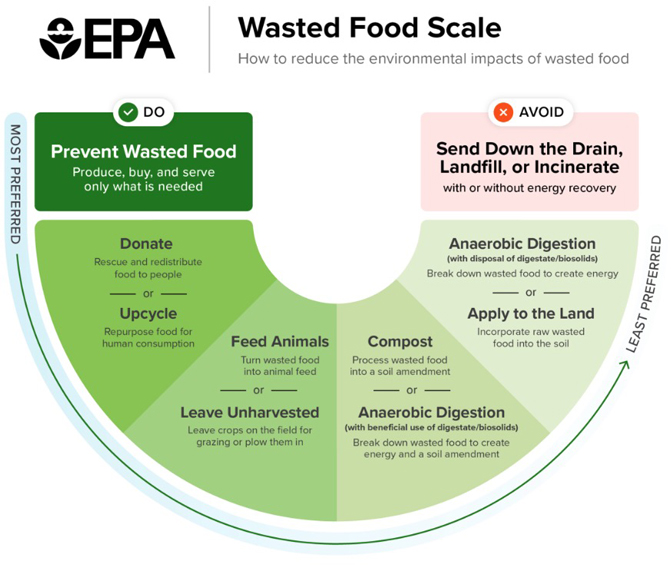
Our two saving graces are our dog and our neighbors.
Sophie fits into the feed animals or leave unharvested category. She likes nothing better on her kibble than boiled halibut skin along with the cooking liquid. That fried halibut that we couldn’t quite finish is delightful for a Sophie breakfast. Her tastes are not limited to seafood. She is very happy to eat the boiled for 10 hours pieces of chicken from when I make chicken stock. Leftover pasta — even if it doesn’t have chanterelles — is another special treat. It also helps that Sophie is not a small girl, weighing in at about 85 pounds with a healthy appetite.
If you want to feel better about food and limit food waste, a dog is a great answer. Feeding animals is not limited to pigs and chickens. Shelters are full now and dogs make great companions.
Veggies And Fruit
But dogs don’t (at least mine doesn’t) eat vegetables — or fruit for that matter. That brings us to our neighbors. We may have an empty nest but Susann has two daughters and now both of them have boyfriends. And they are always hungry and grateful for dinner invitations and leftovers. Having them over for dinner and sending them home with the excess makes me happy and our refrigerator much less full. It also falls into the category of Preventing food waste — the absolute best you can do.
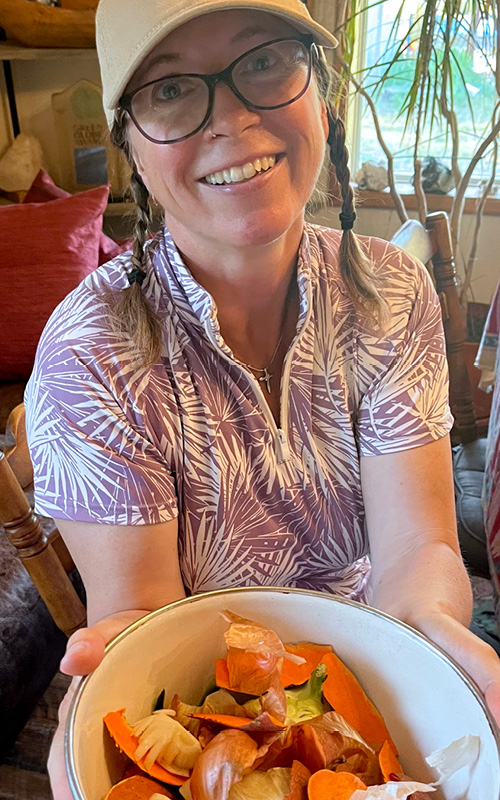
Susann holds her bowl of peels, onion skins, stems and other vegetable trimmings that get fed to the bunnies.
The benefits of having Susann and family don’t stop with their appetites. Susann loves animals and lives on 5 acres with a barn. I am not sure that she even knows about the EPA Wasted Food Scale but I would argue that she could be the Poster Girl for the effort.
When you go to her house for dinner there is a bowl set out on the counter for the scraps when she cooks. The carrot peels, onion skins, cauliflower stems, anything green or falling into that general category goes to the bunnies. She accepts scraps from us too. Often my husband will walk over our vegetable scraps. The bunnies later turn into dinner but that is another story.
At the dinner table is another bowl. Bones that still have gristle and any leftovers are taken to the chickens. These birds are not fussy and are always ready for treats. We have a Mill food scrap dehydrator at home and are more than happy to trade our dried food (we leave out the coffee grinds) for eggs. Susann mixes some of the dried grounds in with the chickens’ regular meal and they come running. Fresh or dried, the chickens are happy to eat leftovers.
If it doesn’t work for the bunnies or the chickens, there are always the goats and alpacas. Our corn stalks, cobs and silk — even if they’re dried out — are great for a goat. And here is where Susann really earns her status as a potential Poster Girl: the goats and alpacas also delight in yard trimmings. Our Christmas tree, thrown into the yard after the fact and covered with snow turned into an afternoon treat for the goats and alpacas. Now they get all our yard trimmings. The EPA likely doesn’t have a yard waste scale, but if they did…
Not everyone can or needs to have a dog. Not everyone has neighbors like Susann or is in the position to raise a menagerie. Hopefully soon though everyone will have access to a home appliance or a green bin to keep any excess food in the green and out of the landfill.
Sally Brown, BioCycle Senior Adviser, is a Research Professor at the University of Washington in the College of the Environment.


